Expert Insights and Solutions for CNC Machine Operation #
This article provides a structured overview of frequently asked questions and expert solutions related to CNC lathes and machining centers. The content is organized to help operators, technicians, and engineers address common challenges, improve machining accuracy, and maintain optimal machine performance.
Lathe Operations and Troubleshooting #
Setting the Origin on a CNC Lathe #
The machine home position serves as the system’s initial reference point and must be returned to either manually or automatically. The workpiece origin is set based on machining requirements, typically using G54 to G59 commands. The process involves:
- Returning to Machine Home Position: Use manual mode or the “Return to Home” function to move the machine to its home position.
- Verifying Home Position: Check the controller’s machine coordinates to ensure they match the home position. If not, inspect limit switches or sensors.
- Setting the Workpiece Origin: Move the tool to the workpiece reference point and set it as the origin using the controller. Assign different origins with G54–G59 as needed.
- Test Run: Perform a test run to confirm the origin is set correctly and avoid positional errors.
Troubleshooting a Machine That Won’t Start #
- Power Supply: Ensure the power cord is connected, the socket is live, and the power switch is on. Check indicator lights for abnormalities.
- Fuses and Breakers: Inspect for blown fuses or tripped breakers and replace or reset as needed.
- Control Panel/Display: Look for error codes or warning messages. A blank screen may indicate display or control circuit issues.
- Buttons and Switches: Confirm correct operation and follow any specific startup procedures.
- Overheat Protection: Allow the machine to cool if overheat protection has triggered.
- Cables and Connections: Inspect all cables and connectors for damage or looseness.
- Restart/Reset: Use the machine’s restart or reset function to resolve system errors.
Causes of Unstable Machining Accuracy #
- Machine Tool Accuracy: Wear on guide rails, spindle eccentricity, or loose drive components.
- Tool Wear: Gradual tool degradation affects cutting performance.
- Improper Cutting Parameters: Incorrect speed, feed, or depth can cause excessive forces and thermal deformation.
- Unstable Clamping: Poor workpiece clamping leads to deformation.
- Environmental Factors: Temperature, humidity, and air pressure can impact accuracy.
- Material Inconsistency: Variations in material properties affect cutting.
- Vibration: Machine, workpiece, or tool vibration impacts finish and accuracy.
- Operator Skill: Experience and familiarity with the machine matter.
- Control System Instability: CNC or servo system errors can cause tracking issues.
- Thermal Effects: Heat from cutting causes deformation.
Handling Cooling System Issues #
- Coolant Level and Quality: Check and refill coolant; replace if contaminated.
- Blockages: Inspect and clean pipelines, filters, and nozzles.
- Pump Operation: Check for pump failure or filter clogs.
- Distribution System: Ensure nozzle alignment and pressure are correct.
- Temperature Control: Maintain coolant temperature within optimal range (20–25°C).
- Regular Cleaning: Clean all cooling system components and replace coolant periodically.
- Coolant Selection: Use the appropriate coolant type for the material and process.
Improving Workpiece Surface Roughness #
- Cutting Parameters: Adjust speed, feed, and depth for optimal surface quality.
- Tool Selection: Use sharp, suitable tools and replace worn ones.
- Coolant Use: Apply proper coolant flow and spray angle.
- Machining Sequence: Gradually remove material, using roughing before finishing.
- Fixturing: Secure the workpiece to prevent movement or deformation.
- Vibration Control: Minimize machine and tool vibration.
- Post-Processing: Use polishing or grinding for higher surface quality.
- Material Considerations: Select materials with suitable properties for the desired finish.
Using Fixtures to Secure Workpieces #
- Fixture Selection: Choose vises, plate fixtures, chucks, or universal fixtures as appropriate.
- Mounting: Secure the fixture to the machine table or chuck.
- Workpiece Placement: Align and stabilize the workpiece in the fixture.
- Clamping Force: Adjust to avoid deformation or instability.
- Position Verification: Use measuring tools to ensure correct alignment.
- Operation Monitoring: Watch for abnormal movement during machining.
- Post-Machining Inspection: Check the workpiece for compliance with specifications.
Adjusting for Dimensional Deviations #
- Equipment Accuracy: Regularly calibrate and check spindle and worktable conditions.
- Tool Maintenance: Replace or resharpen worn tools.
- Parameter Adjustment: Set appropriate cutting speed, feed rate, and depth.
- Deformation Control: Ensure stable clamping and proper cooling.
- Material Quality: Use high-quality, defect-free materials.
- Process Review: Optimize machining sequence and finishing details.
- Measurement and Feedback: Regularly measure and adjust based on results.
Eliminating Vibration Issues #
- Machine Structure: Ensure stability and reinforce the base if needed.
- Spindle Maintenance: Check alignment, balance, and bearing condition.
- Tool and Fixture: Use appropriate, stable tools and rigid fixtures.
- Cutting Force: Select suitable parameters for stable cutting.
- External Interference: Minimize environmental vibrations.
- Dynamic Balancing: Test and adjust machine components.
- Anti-Vibration Mats: Install as needed.
- Regular Maintenance: Monitor vibration sensors and maintain components.
Tool Calibration Procedures #
- Preparation: Ensure machine and tool are ready; gather measuring tools.
- Installation: Secure the tool in the spindle or tool magazine.
- Reference Point: Set a zero or reference point for calibration.
- Length Measurement: Use a presetter, probe, or manual method.
- Radius Measurement: Measure with a presetter, probe, or manually.
- Data Input: Enter measurements into the CNC system.
- Compensation: Update the tool compensation table.
- Test Machining: Verify results and recalibrate if needed.
- Data Saving: Store measurements for future use.
- Recalibration: Repeat after tool changes or maintenance.
Enhancing CNC Machining Accuracy #
- Machine Selection: Use high-precision, stable machines with quality components.
- Parameter Setting: Choose optimal speed, feed, and depth.
- Maintenance: Keep machines clean, lubricated, and regularly inspected.
- Tool Management: Use suitable, sharp tools and ensure correct installation.
- Environmental Control: Maintain stable temperature and minimize vibrations.
- Measurement and Compensation: Use precise instruments and automatic compensation systems.
- Operator Training: Ensure skilled operation and process design.
- Design Precision: Consider machine and tool limitations in part design.
- Positioning: Use stable fixtures and accurate reference points.
Machining Centers: Common Issues and Solutions #
Resolving “Over-Travel” Alarms #
- Alarm Identification: Refer to the manual for alarm codes and affected axes.
- Alarm Clearing: Use reset or clear functions, or manually move axes back within limits.
- Limit Switches: Inspect hardware and software limits for malfunctions or misconfigurations.
- Program Review: Check G-code and coordinate settings for errors.
- Restart and Testing: Reboot the machine and perform empty stroke tests.
Reducing Vibration During Machining #
- Tool Selection: Use rigid, vibration-damping tools with suitable geometry.
- Parameter Adjustment: Lower cutting depth, width, speed, and feed as needed.
- Tool Holding: Use high-rigidity holders and minimize tool overhang.
- Vibration-Damping Devices: Employ specialized holders or materials.
- Machine Setup: Ensure machine rigidity, stability, and regular maintenance.
- Workpiece Clamping: Secure workpieces with appropriate fixtures.
- Machining Method: Choose suitable cutting methods and avoid resonance frequencies.
- Coolant Usage: Apply coolant to reduce friction and stabilize temperature.
- CNC Functions: Utilize built-in vibration reduction features if available.
Machine Fails to Start: Possible Causes #
- Power Issues: Check connections, fuses, breakers, and voltage.
- Control System: Inspect panel, program, and switches.
- Safety Mechanisms: Ensure emergency stop, safety doors, and overload protection are not engaged.
- Mechanical Failures: Look for jams, motor issues, or overheating.
- Sensor Failures: Verify position sensors and input devices.
- Software Errors: Address configuration or communication problems.
- Cooling System: Ensure proper operation.
- Operator Errors: Confirm correct procedures and settings.
Addressing Noise During Milling #
- Tool Condition: Replace worn or damaged tools and select appropriate types.
- Cutting Parameters: Adjust speed, feed, and depth for stability.
- Machine and Fixture: Ensure rigidity and secure clamping.
- Cutting Fluid: Use sufficient, suitable coolant.
- Material Suitability: Address hardness variability or defects.
- Alignment: Ensure correct tool and machine alignment.
- Vibration Checks: Use dampers and increase rigidity as needed.
Troubleshooting Homing Issues #
- Mechanical: Check for jams, wear, and lubrication.
- Electrical: Inspect servo systems, encoders, and wiring.
- Parameters: Verify home position and program settings.
- Limit Switches: Ensure proper function and adjustment.
- Control System: Restart and check configuration.
- Environment: Maintain stable installation and temperature.
- Drive System: Inspect spindle and drive components.
Resolving Spindle Abnormal Alarms #
- Power Supply: Stabilize voltage and check connections.
- Overheating: Allow cooling and check the cooling system.
- Motor Failure: Test and repair or replace as needed.
- Drive System: Inspect and address drive faults.
- Servo System: Check control signals and encoders.
- Mechanical Parts: Lubricate and repair as necessary.
- Parameter Settings: Adjust driver parameters as required.
- Communication: Ensure proper system communication.
- Environment: Maintain suitable ambient temperature.
Non-Functional Control Panel Buttons #
- Physical Failure: Clean, repair, or replace stuck or damaged buttons.
- Contact Issues: Secure connections and repair wiring.
- Power Supply: Ensure stable power and display function.
- Mechanical/Touch Panel: Calibrate or replace as needed.
- System Settings: Check for locks or incorrect configurations.
- Software Errors: Restart or update firmware.
- Interference: Minimize electromagnetic sources and ensure grounding.
- Circuit Board: Inspect and replace if damaged.
- System Reset: Reboot the CNC system.
Tool Changer Fails to Change Tools Automatically #
- Mechanical Failures: Inspect for jams, misalignment, or improper tool fit.
- Drive System: Check motor, transmission, and control signals.
- Pneumatic System: Ensure adequate air pressure and component function.
- Sensors: Verify position and recognition sensors.
- CNC System: Review program and parameter settings.
- Electrical Issues: Inspect connections and signals.
- Operator Error: Confirm correct mode and reset if needed.
Performing CNC Program Simulation Checks #
- Built-in Simulation: Use the CNC machine’s simulation mode to preview tool paths and machining steps.
- Professional Software: Employ tools like Vericut, Mastercam, or Fusion 360 for detailed simulation, error checking, and collision detection.
- Virtual Machine Environments: Set up virtual machines in software for realistic process simulation.
- Common Checks: Look for tool collisions, path rationality, tool change points, parameter settings, and machine interference.
- Adjustments: Modify tool paths and parameters as needed based on simulation results.
Restarting a Stuck Program #
- Alarm Messages: Review and address error codes.
- Machine Status: Ensure safe conditions and clear blockages.
- Manual Movement: Use manual mode to reposition components.
- Program Restart: Stop, reset, and restart the program from a safe point.
- System Checks: Inspect drive, electrical, and feed systems.
- System Restart: Power cycle the CNC system if necessary.
- Manual Intervention: Skip or modify problematic program sections.
- Cooling System: Ensure proper coolant flow and temperature.
- Tool Reset: Manually reposition tools if needed.
For further assistance or detailed product information, please refer to the Contact Us page.
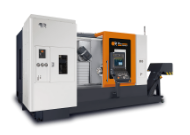 Multi-tasking Turning Center
Multi-tasking Turning Center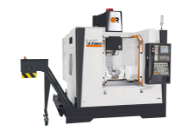 5-Axis Machining Centers
5-Axis Machining Centers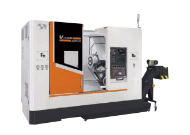 CNC Turning Lathes
CNC Turning Lathes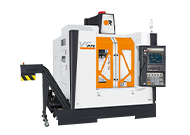 Machining Centers
Machining Centers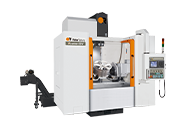 Wheel Machining & Turnkey
Wheel Machining & Turnkey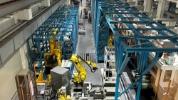 Automated Integration
Automated Integration Pre-Owned Machines
Pre-Owned Machines